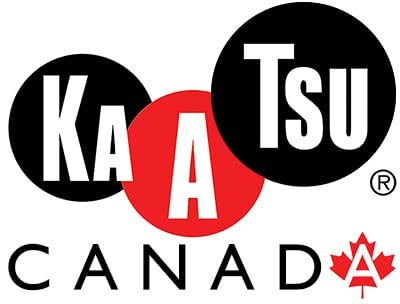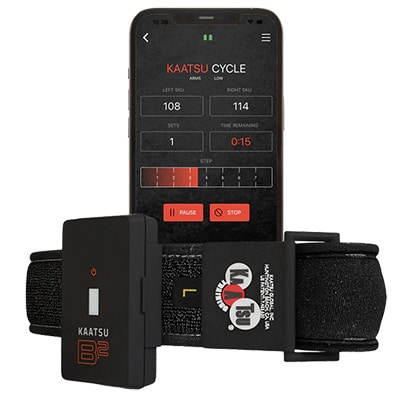KAATSU Vs. Blood Flow Restriction (BFR)
Similar, Yet Different
KAATSU and BFR are related. KAATSU is often referred to as “the original BFR” modality. Does that make it BFR? Well, it would, if BFR was performed the same was as KAATSU 🙂
Differences between KAATSU and BFR are significant but are not well explored in the research literature. In my experience with both modalities, it is my opinion that KAATSU and BFR have different underlying philosophical approaches. The difference in philosophy is mirrored in the design of the equipment as well as in the usage protocols that each modality offers.
While I readily admit my knowledge is incomplete in many areas relating to the history of BFR’s development, I continue to learn, and will update this page accordingly. I welcome readers to contribute their own content as long as it is documented in some way.
KAATSU – Dr. Sato & the KA-ATSU Concept
Dr. Yoshiaki Sato came up with the concept of KAATSU when he was 16 years old. He had been sitting on his knees in the seiza position at a Buddhist funeral for a while and his legs were getting sore. He rubbed his calves and noticed that they were pumped. As a young bodybuilder, he recognized the feeling as being similar to the pump he would get after doing resistance training. He thought about what had caused this pump and theorized it was because his blood flow had been modified in some way by sitting in seiza. He then wondered whether he could build muscle faster by purposefully modifying his blood flow. This young biohacker began a 7-year experimental journey that eventually resulted in the development of the earliest KAATSU protocols.
At first, Sato was using whatever he could find to wrap around his limbs in various ways. Judo belts. Bicycle inner tubes. Luggage straps. In addition to materials, he tested where to wrap his limbs and how firmly he should do so. After he experienced blood clots, he realized that occluding (cutting off) blood flow could be dangerous. He decided that pressures that were high enough to occlude should be avoided. This was an important moment in the development of KAATSU, as it directly impacted the approach, materials, and protocols that Sato would consider appropriate.
Interestingly, in Japanese, KAATSU does not mean Blood Flow Restriction. KAATSU is written 加圧 in Japanese, and is a compound word that means “additional pressure”. Dr. Sato never wanted KAATSU to be referred to as “blood flow restriction”. However, when the first papers on KAATSU were to be published, journal editors said that the Japanese word KAATSU could not be used. Alternate terms like “moderate vascular occlusion” and “blood flow restriction” were used instead, and eventually blood flow restriction became the commonly accepted English terminology.
Occlusion’s Not a Big Deal – But it Is
When we talk about occlusion, there are a couple of different things we can refer to. There is arterial occlusion, which is the complete stoppage of blood flow INTO a limb. Then there is venous occlusion, which is the complete stoppage of blood flow OUT of a limb. Blood flow restriction modalities work by creating pressure on the limb that is designed to stop 100% of the venous flow of blood from the limb back to the heart. They do this by working at a percentage of Limb Occlusion Pressure (% LOP). To calculate this, BFR systems pressurize their equipment and measure when they reach 100% LOP. The pressure is then lowered to between 40~80% LOP, which is enough to occlude venous flow while maintaining some arterial flow.
Occlusion is not part of the KAATSU system. When used according to protocols, KAATSU can not occlude blood flow. During KAATSU, arteries are still bringing blood into the limbs and veins are still carrying blood out of the limbs. When KAATSU AirBands apply compression, they slow down venous flow but do not stop it. This is a significant difference between KAATSU and BFR, and in my opinion, it is one reason why KAATSU is not researched as much as BFR.
Why is that? Well, % LOP is simple. It’s clear. It’s consistent. Sure, the pressure is different for each individual, but it’s a “standard” pressure. In a research program, if everyone is working at the same percentage of LOP, then the treatment is standardized.
Why Doesn’t % LOP Matter to KAATSU?
Measuring the percentage of limb occlusion pressure doesn’t matter in the KAATSU modality and protocols because KAATSU doesn’t occlude. Dr. Sato’s approach with KAATSU was to avoid occlusion. To do that, KAATSU protocols and equipment are designed never to cut off blood flow. KAATSU AirBands are narrow, flexible, and a little stretchy. Even when inflated to the maximum pressure of the KAATSU compressor, KAATSU AirBands do not cut off blood flow. This is a feature of KAATSU – not a bug 🙂
In addition, KAATSU pressures start low. The AirBands are applied snugly and are then inflated slightly. The pressure is held for 30 seconds at a time and then the pressure is released. After a 5 second rest, the AirBands are inflated again, but this time at an incrementally higher pressure. Again, the pressure is held for 30 seconds and is released. This compression / decompression / re-compression at a higher pressure is the patented KAATSU Cycle, and it is yet another reason that KAATSU differs from BFR. The release of pressure in the KAATSU AirBands every 30 seconds is another reason why KAATSU protocols don’t worry about % LOP.
But, KAATSU is Still at some % LOP, Right?
Of course, KAATSU is operating at some undefined percentage of limb occlusion pressure. That’s the challenge: it’s an undefined pressure. It is clearly a non-occluding pressure, but it’s still some % LOP.
Language Determines Equipment & Protocols
I think something got lost in translation when the first research papers on KAATSU were published. The term “moderate vascular occlusion” is a strange one. It seems to me that people ran with the word “occlusion”, which is perhaps why the first BFR devices to hit the market were re-purposed surgical tourniquets. Researchers figured out how to make these devices provide “moderate vascular occlusion”. Since BFR is performed with occlusion-based equipment, takes people to full arterial occlusion before settling on a pressure that provides full venous occlusion, and uses a constant pressure, it is not the same as KAATSU. And while KAATSU may be “the original BFR”, by definition it is not BFR. They’re related modalities, but they’re not the same.
That depends. When it comes to some things, KAATSU and BFR do indeed produce similar results. HOW they produce those results is where there is some difference. KAATSU and BFR may diverge in their ability to produce results because the patented KAATSU Cycle mode is not replicable in BFR systems. Dr. Sato and KAATSU Specialists worldwide have been using the KAATSU Cycle mode with positive results for decades on patients with conditions that haven’t yet been researched with BFR. And, Cycle mode allows the beneficial use of KAATSU in non-exercise, non-rehabilitation activities and settings where BFR would not be appropriate.
Can you imagine, for a moment, doing household chores with a BFR system? How about cutting the grass? Shoveling snow? Traveling on an airplane, train, or car? These are places where one can use KAATSU to help build strength, improve cardiovascular health, and get an overall boost to one’s health & wellness.
Moreover, these activities are not even considered exercise. Almost every BFR paper I have seen touts the value of BFR and light exercise as the winning combination. To me, the ability of KAATSU to help people increase muscle and strength without having to do activities we think of as exercise is the real game-changing aspect of KAATSU. Also, in this era of rampant metabolic dysfunction, anything that can have a positive effect on people’s metabolic health with minimal exercise should be given top priority for rapid adoption and/or research, in my opinion. (See article “KAATSU Training: Application to Metabolic Syndrome)
A Final Word . . . For Now
KAATSU has been used clinically in Japan since the mid-1970’s. Its methodology and technology were rigorously investigated for over a decade by a team of cardiologists to ensure it is safe and effective. The research and results demonstrated by Dr. Sato and his team over decades of use in Japan establishes KAATSU as the original form of BFR training. KAATSU sets a compelling standard due to safety, comfort, and effectiveness across a broad spectrum of physical conditions, and for its ability to help people improve health and wellness in what would be considered non-exercise conditions.
BFR is not KAATSU. KAATSU is not BFR. Only KAATSU is KAATSU.
Get KAATSU Products in Canada!
KAATSU products and protocols have been proven safe and effective for decades. Suitable for all ages and abilities, the KAATSU family of products are an ideal way to improve health, fitness, rehabilitation, and recovery.
KAATSU products are available for personal or professional use.


